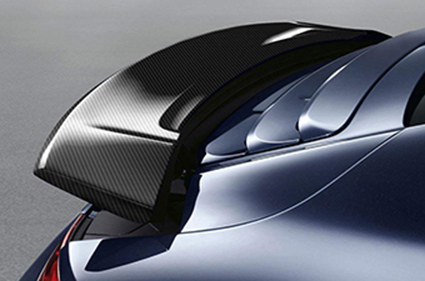High-performance fiber and elastomer materials for the automotive industry
Automotive technology development trend-lightweight
Automotive lightweighting is to integrate structural lightweight design and manufacturing technology with a variety of lightweight materials on the premise of ensuring automotive use, safety performance, and cost control requirements, as much as possible to reduce the quality of the automobile, thereby improving the automotive’s quality Power, reduce fuel consumption, reduce exhaust pollution. Experiments have shown that a 10% reduction in the vehicle’s kerb quality can increase fuel efficiency by 6-8%, a 100-kilogram reduction can reduce fuel consumption by 0.3-0.6 liters per 100 kilometers, and reduce CO2 emissions by 5 grams / km. Therefore, due to the needs of environmental protection and energy saving, automobile lightweight has become the development trend of automobile technology in the world, and the use of lightweight materials is the main direction of automobile lightweight development. Among them, high-performance fiber composite materials and thermoplastic elastomers, as key materials for automobile lightweight, are widely used in the automotive field and have good development prospects.

High-performance fiber composite materials-turning the lightweight dream of automobiles into reality
Carbon fiber is a fibrous carbon material with more than 90% carbon content. The specific gravity is less than 1/4 of steel, and the tensile strength is 7-9 times that of steel. Even if it is in a high-temperature inert environment at 2000 ° C, it will not reduce strength With light weight, high strength, strong designability, high damping, high temperature resistance, corrosion resistance, impact resistance and other excellent characteristics. Automobile manufacturing giants in developed countries such as Europe, America and Japan have been leaders and promoters of carbon fiber reinforced composite materials (CFRP) for automobile lightweighting. The use of composite materials such as carbon fiber-reinforced polymers instead of traditional metal materials can reduce the weight of the chassis and body of the car by 40% -60%. Its application range has gradually expanded from the original high-end sports cars such as Lamborghini and Ferrari to BMW and Mercedes-Benz. And other high-end cars, and will continue to extend to ordinary cars and large passenger cars; the weight of all carbon fiber wheels and carbon fiber rims + alloy spokes is 35% and 25% lighter than forged alloy wheels, respectively, which can significantly reduce the weight of the vehicle; CFRP The braking stability of the moving disc is very good. The driving speed of the car can be reduced from 300km / h to 50km / h within a distance of 50m, and it is not affected by the rapid rise of the brake disc temperature to 900 ° C during this process.
BMW is a pioneer in the application of CFRP in the automotive field, and it has pioneered the full-scale application mode of CFRP in car bodies, interiors and exterior parts; Toyota, Volkswagen, Mercedes-Benz, Hyundai and many other car manufacturers have also applied CFRP to a variety of Auto parts, including body, chassis, wheels, roof, doors, brake discs, hood, tail, center console, trim strips, instrument panel, drive shaft, seats, tail spoiler, mirror housing, Suspension arm, sun visor, side guard, low pedal, fuel cell reactor frame, etc. Benefiting from national strategic planning and policy support, a large number of enterprises in China have also carried out research on the application of carbon fiber in automobile lightweighting: companies such as Aoxin New Energy, Chery Automobile, Great Wall Huaguan, etc. have successfully developed CFRP electric vehicles and are working hard Achieve low-cost and mass production; Beijing Automobile, SAIC, Changan Automobile, China FAW, etc. are also researching and developing carbon fiber hood, roof cover, front grille, tail wing, transmission shaft, rear lift door, leaf spring and other components And made significant progress in production.
The glass fiber reinforced plastic (glass fiber reinforced plastic) with thermoplastic or thermosetting resin as the matrix is light, high-strength, heat-insulating, soundproof, waterproof, easy to color, and easy to form. It has been used to manufacture car bodies, passenger cars, trucks and other body parts The effect of reducing self-weight and improving vehicle weight utilization coefficient is achieved. All car types in developed countries such as Europe, America and Japan now use a large amount of SMC composite materials, including suspension parts, body parts, interior trim parts, etc. Among them, bumpers, roofs, front face parts, engine covers, sound insulation panels and other parts The largest usage; and today’s urgent demand for lightweight materials, recyclability and ease of processing in the automotive sector has driven the growing market share of glass fiber reinforced thermoplastic composites (GMT), which are mainly used in automotive bumpers.
Bamboo fibers, hemp fibers, wood fibers, cotton fibers, etc., which are natural fibers, have the advantages of environmental friendliness and reproducibility. The bamboo fiber reinforced composite material has the properties of light weight, high strength and high rigidity. The automobile interior panel prepared by it is not easy to be damaged due to the unique toughness of the bamboo fiber in the event of an accident, and the quality of the finished product can be reduced by 20%; Wood-plastic composite materials obtained by adding fibers such as hemp and flax as reinforcement fibers to the polymer can be molded or injection-molded to make doors and seats and other automotive parts; in addition, the strength of natural fiber parts can be produced by reinforcing ribs. Manufacture of seat frames, seat armrests, instrument panels, engine covers, side impact protection accessories, chassis components, etc.
There are many types of synthetic fibers, such as polyester, nylon, aramid, acrylic, spandex, etc. The new synthetic fiber products can not only achieve the relevant fiber strength indicators, but also have good color fastness, breathability, flame retardancy, moisture absorption, and resistance. The advantages of ball, anti-static, etc. meet the requirements of modern cars for safety, comfort, economic durability and stability, and are widely used in automotive interiors, such as seat fabrics, seat belts, airbags, etc.
